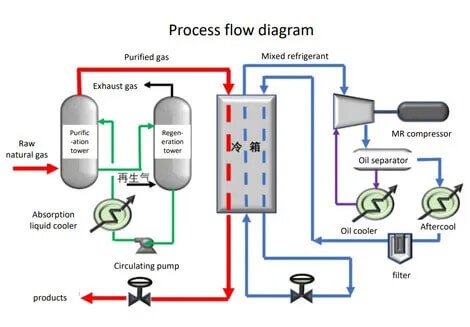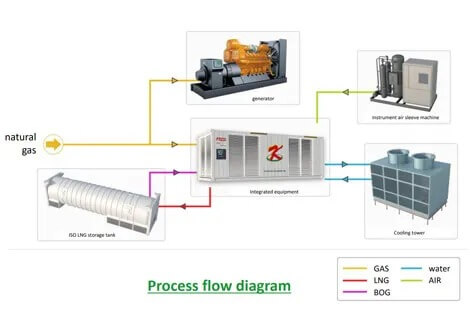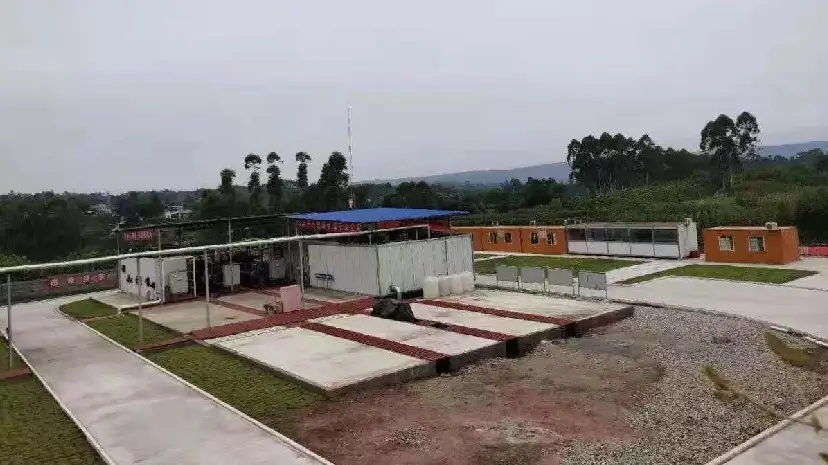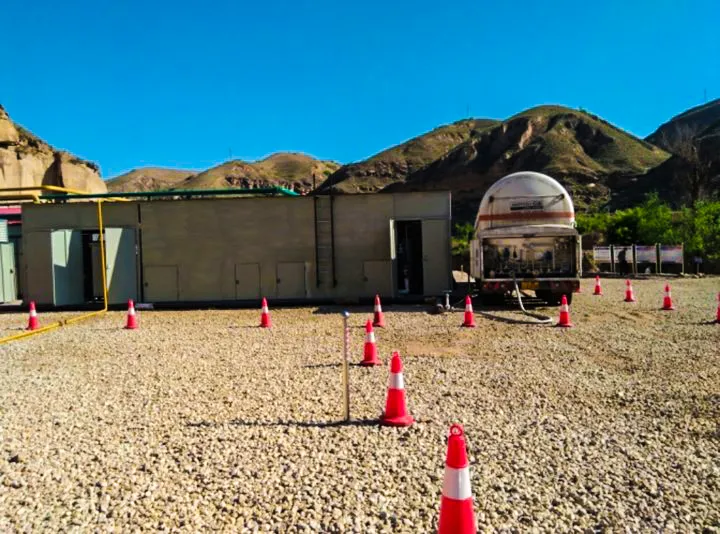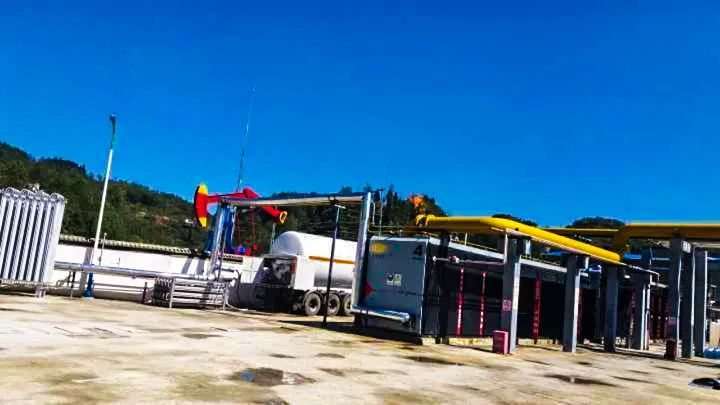Why Is Natural Gas Recovery So Important? ——The “Green Engine” For Energy Conservation And Emission Reduction
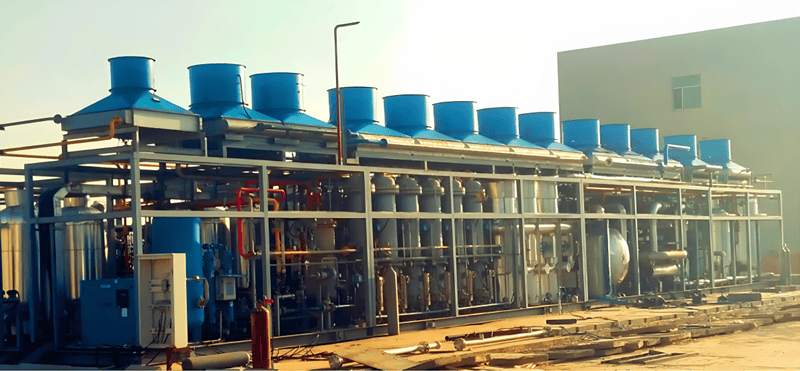
Natural gas, as an efficient and clean energy source, plays an indispensable role in industrial production, urban heating, transportation, and power generation. However, regrettably, a large amount of gas is wasted or even emitted during extraction, processing, transportation, and usage.
Natural Gas Recovery (Also Known as Gas Recovery) is a key solution to this problem. It not only improves the utilization efficiency of natural gas resources but also becomes an important part of achieving green transformation, demonstrating strategic value in energy conservation, emission reduction, environmental compliance, and operational safety.
What is Natural Gas Recovery?
Natural gas recovery refers to the process of using technical means to recover natural gas resources that would otherwise be emitted, burned, or wasted, and use them for energy supply, power generation, liquefaction, and other purposes. In the accelerating green transformation, resource recovery has gradually shifted from an “optional” to a core action for enterprises to achieve low-carbon goals.
Common Types of Natural Gas Recovery
| Recycling type | Description | Application |
| Associated gas recovery | Natural gas produced along with crude oil is often burned or released without being used. | Power generation, heating, liquefied LNG |
| Flare gas recovery | The waste gas emitted by traditional flares is reused through recovery devices | Industrial gas supply, heat recovery |
| Unconventional gas recovery | Resources such as shale gas, coalbed methane, and tight gas collected through advanced technologies | Increase gas supply and expand energy boundaries |
| Wellhead gas recovery | Resources such as shale gas, coalbed methane, and tight gas are collected through advanced technologies | On-site compression, liquefaction or transportation |
Why Is Natural Gas Recovery Crucial?
Process Flow: From Flare Gas to LNG
The significance of natural gas recovery goes far beyond saving energy itself.
✅ Reduce Waste, Improve Efficiency
According to the World Bank, over 150 billion cubic meters of natural gas are directly emitted or burned globally each year, causing not only energy waste but also ignoring huge economic opportunities. By deploying efficient natural gas recovery systems, enterprises can not only reduce operational losses but also convert them into stable energy revenue sources, achieving a dual benefit of “emission reduction + profit.”
✅ Emission and Carbon Reduction, Protect the Environment
Methane’s greenhouse effect is more than 25 times that of carbon dioxide, and it is the main component of natural gas. Natural gas recovery = proactive carbon reduction + methane leakage control + carbon neutrality achievement
✅ Comply with Regulations, Reduce Risks
| Region/Country | Related Regulations and Measures |
| European Union | Implementation of the “Methane Emissions Reduction Regulation” from 2024, restricting methane leakage and emissions in the oil and gas industry. |
| China | The “Dual Carbon” policy framework emphasizes increasing the utilization rate of associated gas, and the “Action Plan for Carbon Peaking and Carbon Neutrality” specifies the promotion of its recovery and use. |
| United States | The U.S. EPA has strengthened methane regulations, requiring oil and gas companies to detect and repair leak points regularly. |
How to Scientifically Plan a Natural Gas Recovery Project?
Planning natural gas recovery is not as simple as “installing a device.” It is a systematic project involving resource assessment, technology selection, investment decision-making, and intelligent operation and maintenance.
Accurate Resource Assessment
KAITIANGAS accurately grasps the types, quantities, and distribution of recoverable natural gas through comprehensive testing and data analysis. This is the premise for formulating economically reasonable and technically feasible plans.
Technology and Process Matching
Combining site conditions, gas source characteristics, and specific needs, select suitable recovery processes and equipment to ensure the system operates efficiently and safely with long-term benefits.
Investment and Return Calculation
Systematically evaluate the overall investment cost, operating expenses, and potential economic returns of the project to ensure good economic feasibility and risk control.
Efficient Project Implementation
Through scientific construction planning, ensure efficient and orderly equipment selection, installation, commissioning, and formal operation, thereby shortening the construction period and realizing benefits as soon as possible.
Intelligent Monitoring and Performance Optimization
With the help of intelligent monitoring systems and data platforms, a real-time grasp of system operation status, dynamic parameter adjustment, and continuous improvement of energy utilization efficiency and environmental performance.
KAITIANGAS: Your Professional Partner for Scattered Natural Gas Recovery
Founded in 2002, KAITIANGAS specializes in the recovery and treatment of dispersed natural gas resources. The company focuses on the development, engineering design, and global promotion of technologies and equipment for the recovery and liquefaction of scattered natural gas. With independent intellectual property rights, mature system solutions, and a professional team, KAITIANGAS has successfully built and operated multiple wellhead flare gas recovery projects in China, the Middle East, and Southeast Asia, accumulating rich field experience and technical advantages.
Scattered Natural Gas Solution Process:
• Natural Gas Purification: Using TCI’s proprietary natural gas purification technology to remove acidic gases, moisture, and heavy hydrocarbons from raw gas in one step. The absorbent is regenerated in the regeneration tower and circulated back to the purification tower by a circulation pump in a closed loop.
• Natural Gas Liquefaction: The purified gas enters the cold box, where it absorbs cold from the mixed refrigerant and condenses into a liquid. The LNG product generated by liquefaction is throttled and depressurized before being sent to the cryogenic storage tank for storage.
• Mixed Refrigerant Cooling: The mixed refrigerant is compressed and pressurized by the compressor, then enters the cold box after oil removal. The mixed refrigerant is precooled by its heat reflux in the cold box, throttled and cooled by the expansion valve, and returns to the cold box, providing cooling for natural gas liquefaction and refrigerant precooling. The low-pressure mixed refrigerant after heat reflux enters the compressor for recycling.
Service System
• Project Feasibility Consultation: Through on-site investigation and data collection, comprehensively assess the types, quantities, and distribution of scattered natural gas resources, combined with the market and policy environment, analyze project economic benefits and risks, and provide a scientific basis for decision-making.
• Engineering Design: Based on feasibility analysis, tailor process flows and system solutions, select the most suitable recovery technologies and equipment, ensure system safety, stability, and high efficiency, and meet actual site needs.
• EPC Project Implementation: KAITIANGAS, with a mature system management system, provides integrated EPC turnkey services covering design, procurement, construction, and commissioning, ensuring quality control, progress management, and delivery verification throughout the project lifecycle, ensuring efficient and reliable project implementation.
• Commissioning and Start-up Support: Provide comprehensive commissioning and operation support, including equipment commissioning, system testing, function verification, and parameter optimization, ensuring safe and efficient start-up and stable operation under design conditions. Through continuous performance monitoring and operation optimization, maximize system efficiency and ensure long-term stable operation.
Technical Specifications
| Parameter | Specification |
| Natural Gas Processing Capacity | 20,000 Nm³/day |
| Installed Power | 500 kW (380V) |
| Instrument Air Consumption | 100 Nmi/h |
| Unit Energy Consumption | ≤ 0.6 kWh/Nm³ |
| LNG Storage Temperature | ≤ -155°C |
Application Scenarios
This system is highly adaptable and commercially valuable across a wide range of unconventional and remote gas sources:
| Application Scenario | Use Case |
| Shale Gas / Coalbed Methane | Pilot production and early-stage development |
| Associated Gas from Oilfields | Flare gas zero emissions and carbon credit monetization |
| Biogas / Landfill Gas | Urban organic gas to LNG conversion and reuse |
| Coke Oven Gas / Syngas | Industrial tail gas to clean energy |
| Isolated / Test Wells | Rapid deployment and fast ROI |
Green Energy Starts from “Recovery”
With the global progress toward carbon peak and carbon neutrality goals, natural gas recovery is not only a corporate responsibility but also a strategic opportunity for energy transition.
✅ Whoever Leads the Layout, Leads the “Low-Carbon Competitiveness”!

